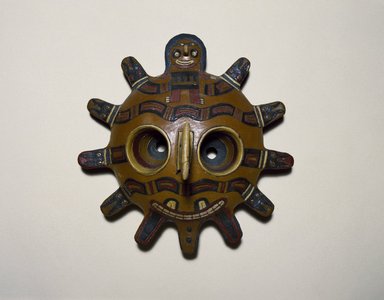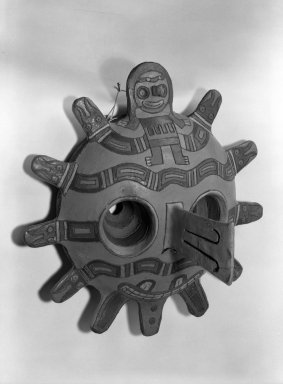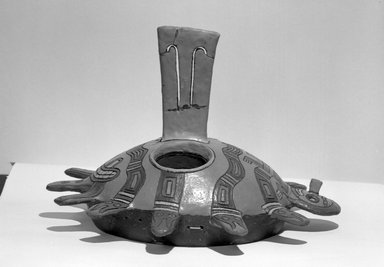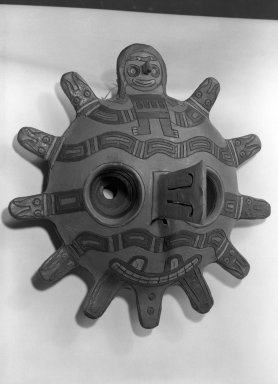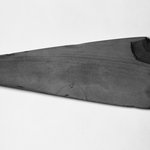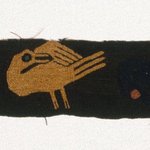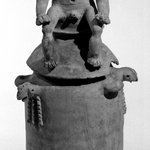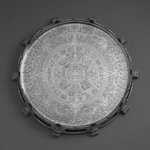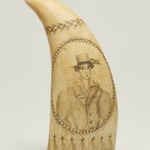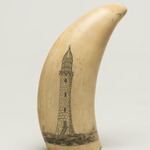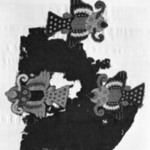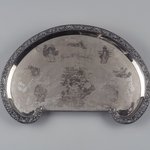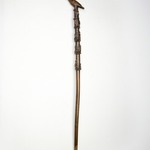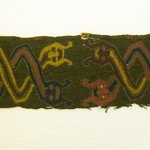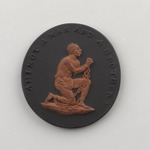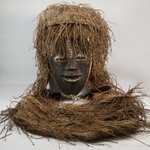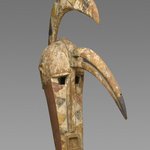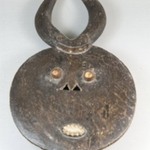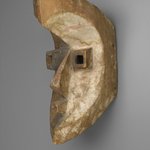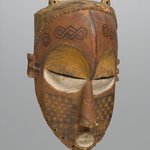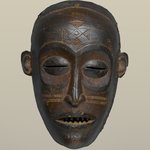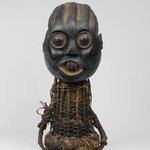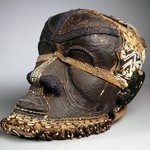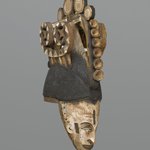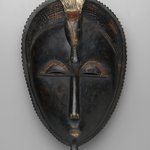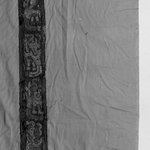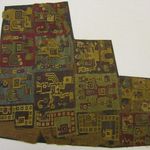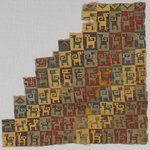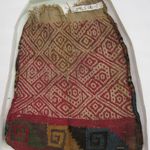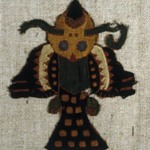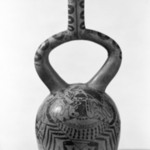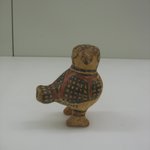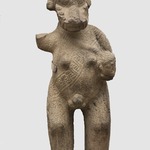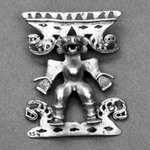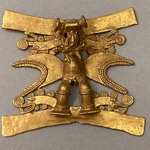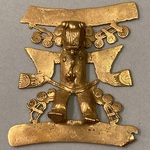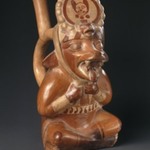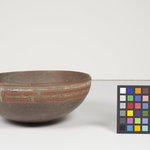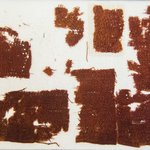Funerary Mask
Arts of the Americas
This colorful mask, which would have been attached to a mummy bundle, represents the Oculate Being, which was named for its large, round eyes and may have been an early fertility-cult deity. The mask has a long, projecting nose, and four undulating serpents are painted across it, each with two heads that form projecting tabs. The three tabs below the smiling, toothy mouth may represent a tongue and possibly fangs. At the top is a human figure with the face of an Oculate Being.
MEDIUM
Ceramic, resin, and pigments
DATES
300 B.C.E.–1
DIMENSIONS
11 3/16 x 10 3/16 x 7 11/16 in. (28.4 x 25.9 x 19.5 cm)
(show scale)
ACCESSION NUMBER
64.94
CREDIT LINE
Frank L. Babbott Fund and Dick S. Ramsay Fund
CATALOGUE DESCRIPTION
Ceramic funerary mask decorated with colored resin enamels. Mask is composed of a Paracas bowl to which the details have been applied by incision or application. Eyes consist of 2 interior cones decorated with concentric circles. 11 tabs project from rim of the face, 8 of which represent serpent heads. A 12th projection at the top of the mask forms the head of a human who is impersonating the Oculate Being by wearing this deity's mask. Its body is represented two dimensionally by incisions embellished with red, yellow and green resin enamel. Its nose is a smaller version of the huge proboscis of the mask.
MUSEUM LOCATION
This item is not on view
CAPTION
Paracas Cavernas. Funerary Mask, 300 B.C.E.–1. Ceramic, resin, and pigments, 11 3/16 x 10 3/16 x 7 11/16 in. (28.4 x 25.9 x 19.5 cm). Brooklyn Museum, Frank L. Babbott Fund and Dick S. Ramsay Fund, 64.94. Creative Commons-BY (Photo: Brooklyn Museum, 64.94_view2_SL2.jpg)
IMAGE
overall, 64.94_view2_SL2.jpg. Brooklyn Museum photograph, 2014
"CUR" at the beginning of an image file name means that the image was created by a curatorial staff member. These study images may be digital point-and-shoot photographs, when we don\'t yet have high-quality studio photography, or they may be scans of older negatives, slides, or photographic prints, providing historical documentation of the object.
RIGHTS STATEMENT
Creative Commons-BY
You may download and use Brooklyn Museum images of this three-dimensional work in accordance with a
Creative Commons license. Fair use, as understood under the United States Copyright Act, may also apply.
Please include caption information from this page and credit the Brooklyn Museum. If you need a high resolution file, please fill out our online
application form (charges apply).
For further information about copyright, we recommend resources at the
United States Library of Congress,
Cornell University,
Copyright and Cultural Institutions: Guidelines for U.S. Libraries, Archives, and Museums, and
Copyright Watch.
For more information about the Museum's rights project, including how rights types are assigned, please see our
blog posts on copyright.
If you have any information regarding this work and rights to it, please contact
copyright@brooklynmuseum.org.
RECORD COMPLETENESS
Not every record you will find here is complete. More information is available for some works than for others, and some entries have been updated more recently. Records are frequently reviewed and revised, and
we welcome any additional information you might have.
Who is the Oculate Being?
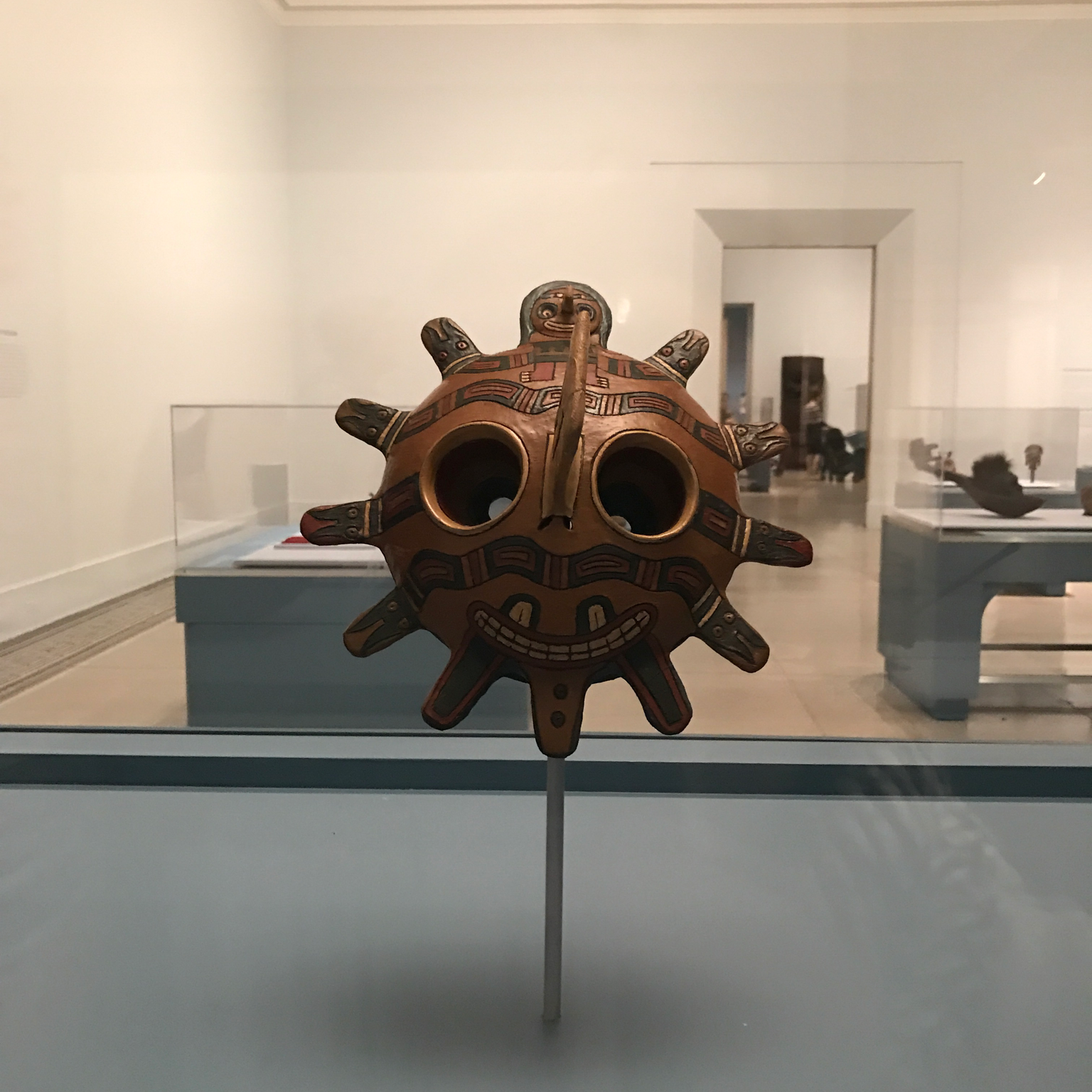
The Oculate Being is believed to be a fertility or agricultural deity. Depictions of the Oculate Being are identified primarily by the overly-large, round eyes—which is where the name comes from.


